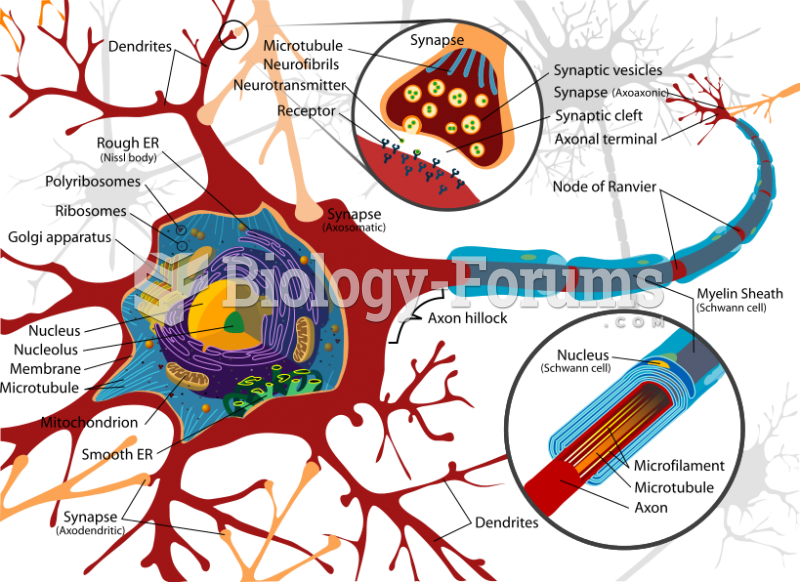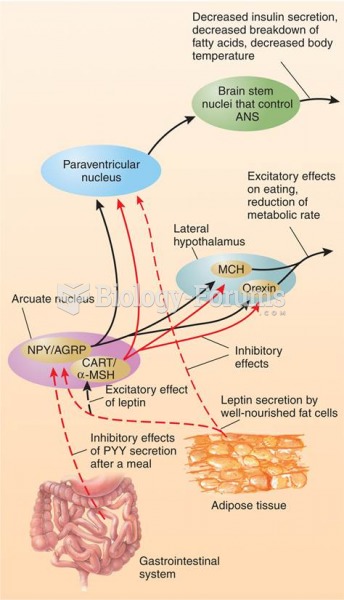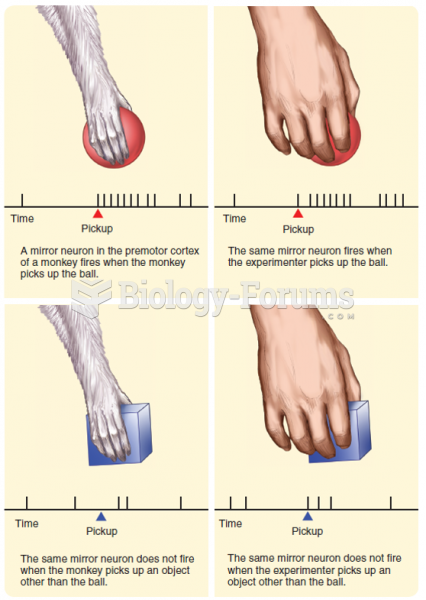Answer to Question 1
O
f discoveries in neuroscience, one of the most exciting to psychologists has been mirror neurons, which are active both during preparation for a movement and while watching someone else perform the same or a similar movement. Mirror neurons were first reported in the premotor cortex of monkeys and later in other areas and other species, including humans. These neurons are theoretically exciting because of the idea that they may be important for understanding other people, identifying with them, and imitating them. For example, mirror neurons in part of the frontal cortex become active when people smile or see someone else smile, and they respond especially strongly in people who report identifying strongly with other people. Many people have speculated that people with autismwho fail to form strong social bondsmight lack mirror neurons. However, one study using fMRI found normal mirror neuron responses in autistic people, so we need to look elsewhere to explain autism. Mirror neurons are activated not only by seeing an action, but also by any reminder of the action. Certain cells respond to hearing an action as well as seeing or doing it. Other cells respond to either doing an action or reading about it.
The possibilities are exciting, but before we speculate too far, an important question remains: Do mirror neurons cause imitation and social behavior, or do they result from them? Put another way, are we born with neurons that respond to the sight of a movement and also facilitate the same movement? If so, they could be important for social learning. However, another possibility is that we learn which visible movements correspond to movements of our own. Then seeing others' actions reminds us of our own, and activates brain areas responsible for those actions. In that case, mirror neurons are not responsible for imitation or socialization.
The answer may be different for different movements. Some newborn infants imitate a few facial movements, especially tongue protrusion. That result implies built-in mirror neurons that connect the sight of a movement to the movement itself. However, in both monkey and human infants, many mirror neurons do not respond to observations of others' movements until after the infant has practiced making those movements itself. A mirror neuron cannot be essential for learning to imitate a movement if you have to practice the movement before that neuron develops its mirror properties.
Also, researchers identified mirror neurons that responded both when people moved a certain finger, such as the index finger, and when they watched someone else move the same finger. Then they asked people to watch a display on the screen and move their index finger whenever the hand on the screen moved the little finger. They were to move their little finger whenever the hand on the screen moved the index finger. After some practice, these mirror neurons turned into counter-mirror neurons that responded to movements of one finger by that person and the sight of a different finger on the screen. In other words, at least some mirror neurons modify their properties by learning, and therefore it is possible that they developed their original properties by learning also.
Answer to Question 2
a







